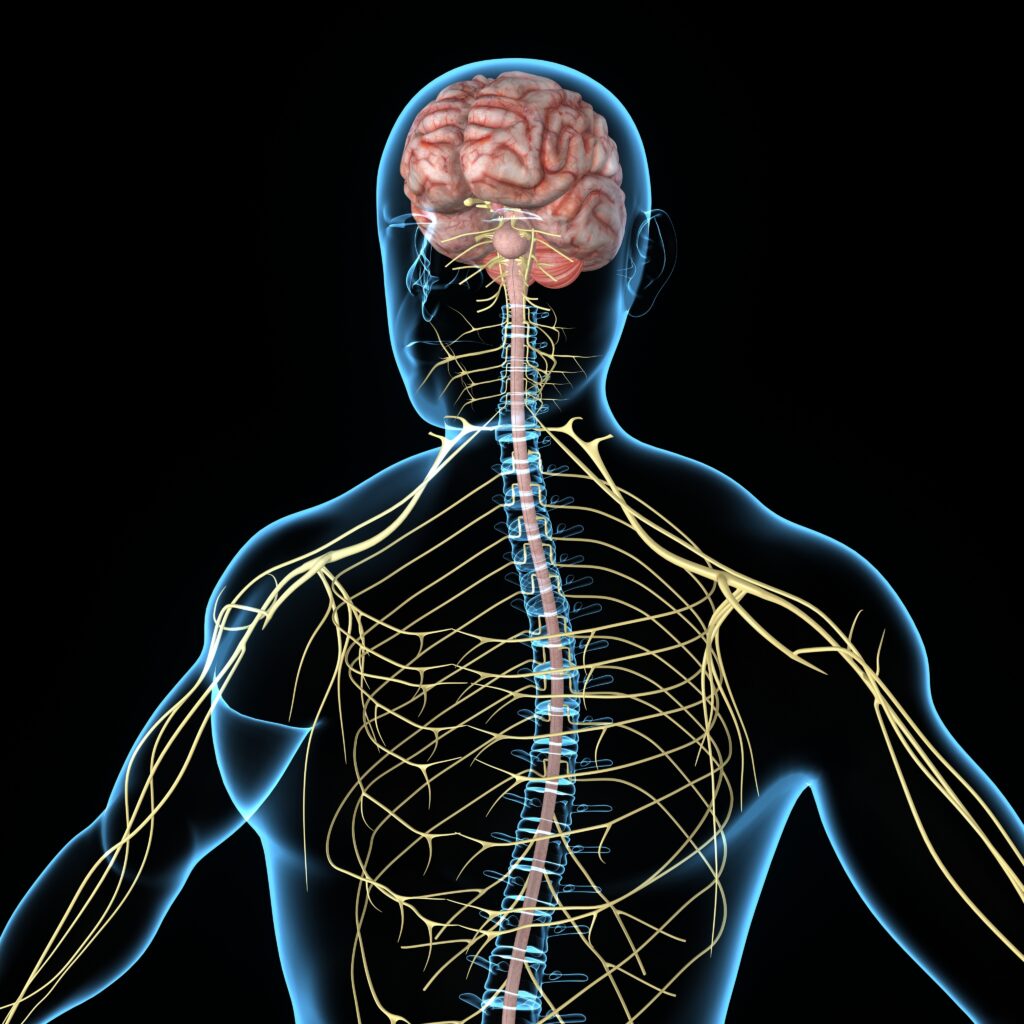The autonomic nervous system (ANS) is a critical component of the human nervous system that is responsible for regulating involuntary body functions such as heart rate, blood pressure, respiratory rate, and digestion. This intricate system works constantly, without our conscious control, to maintain the body’s internal environment in a state of balance (homeostasis). To understand how it achieves this, it is essential to understand the anatomy and organization of the ANS.
The ANS is divided into two primary branches: the sympathetic nervous system (SNS) and the parasympathetic nervous system (PNS). These branches often work in opposition to each other, regulating the body’s internal systems by either stimulating or inhibiting them. Together, they ensure the body’s ability to respond to changes in the environment and maintain homeostasis.
Sympathetic Nervous System (SNS): The SNS is often referred to as the “fight or flight” system. It prepares the body for action by increasing heart rate, blood pressure, and respiration, while diverting blood flow to the muscles. This allows the body to respond quickly to threats or challenges. The SNS is primarily composed of nerves that arise from the thoracic and lumbar regions of the spinal cord, known as the thoracolumbar outflow. These nerves synapse with a chain of ganglia located on either side of the vertebral column, known as the sympathetic chain or sympathetic trunk. From these ganglia, postganglionic fibers extend to various organs and tissues, where they release neurotransmitters, such as norepinephrine, that stimulate the target cells.
Parasympathetic Nervous System (PNS): The PNS is sometimes referred to as the “rest and digest” system. It promotes relaxation, digestion, and the conservation of energy. The PNS decreases heart rate, lowers blood pressure, and stimulates digestion. The PNS is primarily composed of nerves that arise from the brainstem and the sacral region of the spinal cord, known as the craniosacral outflow. These nerves synapse with ganglia that are located near or within the target organs. From these ganglia, postganglionic fibers extend to the target organs, where they release neurotransmitters, such as acetylcholine, that stimulate the target cells.
Enteric Nervous System (ENS): The ENS, also known as the “second brain,” is a network of neurons that regulates the digestive system. It is unique in that it can operate independently of the central nervous system, and it controls gastrointestinal functions such as motility, secretion, and absorption. The ENS is composed of two main ganglia, the myenteric and submucosal plexuses, which are interconnected by interneurons.
Neurotransmitters and Receptors: The ANS communicates with target organs and tissues by releasing neurotransmitters. These chemical messengers bind to receptors on the target cells, triggering specific responses. In the SNS, the primary neurotransmitter is norepinephrine, which binds to adrenergic receptors. In the PNS, the primary neurotransmitter is acetylcholine, which binds to cholinergic receptors. The effects of these neurotransmitters are modulated by various subtypes of receptors, each of which produces specific responses.
Autonomic Reflexes: The ANS is involved in many reflexive responses that help maintain homeostasis. These autonomic reflexes are automatic responses to changes in the internal or external environment. For example, when blood pressure drops, the baroreceptor reflex is activated, stimulating the SNS to increase heart rate and blood pressure. Similarly, when food enters the stomach, the gastrocolic reflex stimulates the ENS to increase motility in the colon.
Integration with the Central Nervous System (CNS): While the ANS can operate independently, it is also influenced by higher brain centers. The hypothalamus, for example, plays a crucial role in coordinating autonomic responses to emotional stimuli. The amygdala and other limbic system structures are also involved in modulating ANS activity.
In summary, the ANS is a complex and essential system that helps the body respond to changes in the environment and maintain homeostasis. Its two main branches, the SNS and PNS, often work in opposition to regulate involuntary bodily functions. The ENS, neurotransmitters, autonomic reflexes, and integration with the CNS also play crucial roles in the functioning of the ANS. Understanding the anatomy of the ANS is fundamental to appreciating the vital role it plays in maintaining the body’s internal equilibrium.
